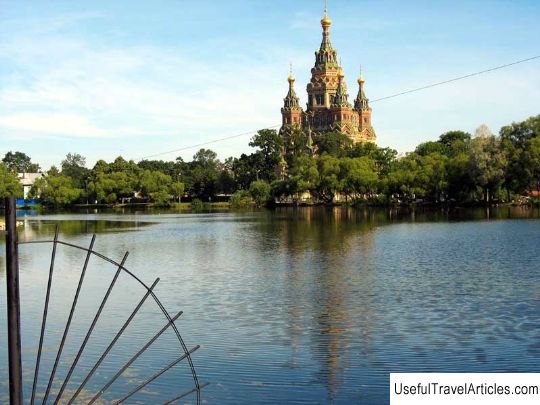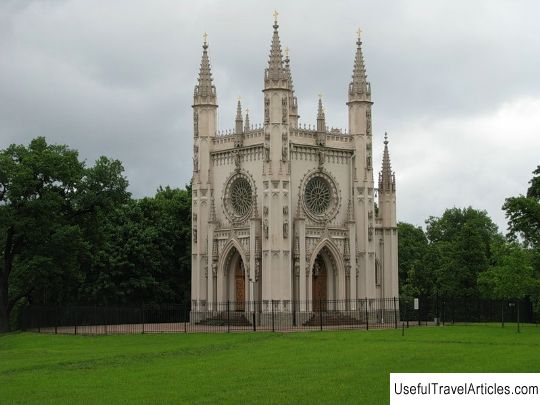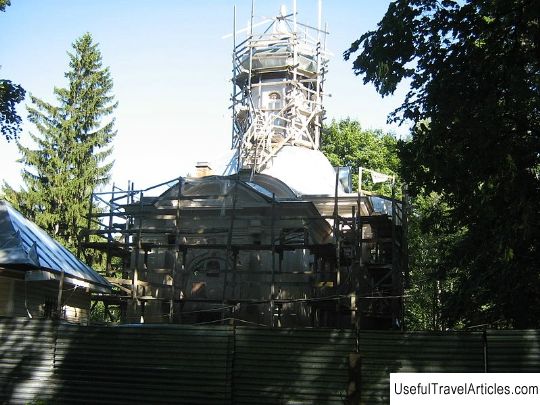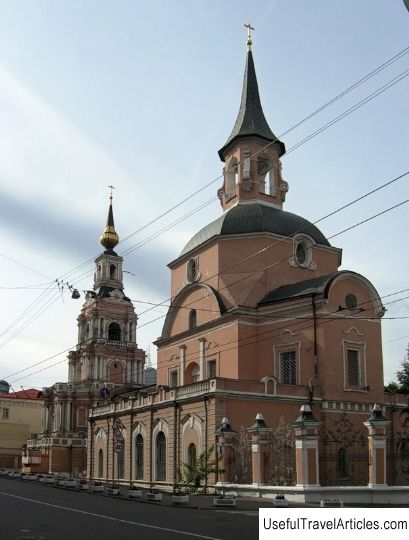Peter and Paul Cathedral description and photos - Russia - St. Petersburg: Peterhof
Rating: 8,1/10 (2132 votes) 
Peter and Paul Cathedral description and photos - Russia - St. Petersburg: Peterhof. Detailed information about the attraction. Description, photos and a map showing the nearest significant objects. Photo and descriptionThe Cathedral of Saints Peter and Paul is an Orthodox church in Peterhof, belonging to the St. Petersburg Diocese of the Russian Orthodox Church. In 1892, the head of the court clergy, Protopresbyter John Yanyshev, expressed an opinion about the construction of a new church in Peterhof, since, despite the many churches, there was no church in the city that could accommodate a large number of parishioners. The petition reached the Emperor Alexander III, who personally determined the place near the Tsaritsyn (Olgin) pond. In the spring of 1893, the project of the temple was approved by N.V. Sultanov. A year later, preparations began for the construction of the church: a foundation pit was dug, temporary sheds and a draftsman's house were built. The foundation stone of the church took place in the summer of 1895. The work was supervised by the architect V.A. Kosyakov. In 4 years, the building itself was erected, then plastering, ventilation and heating work went on for 3 years. For the last 2 years, the painting of the church and the arrangement of the iconostasis have been carried out. A square was laid out around the cathedral. At the same time, the buildings of a parish school, a power plant and a boiler house appeared. The ceremony of consecration of the cathedral took place in June 1905. It was conducted by Protopresbyter John Yanyshev in the presence of the imperial family. The church was assigned to the court department. The stone chapel of St. Joseph the Hymnographer, built in 1868 by the architect N.L. Benoit (destroyed in 1957). In 1938 the temple was abolished. During the war, the cathedral was seriously damaged. Its northern part was destroyed, as a fascist spotter was located here, who followed the movement of Soviet ships. There were attempts to bring him down. In the post-war years, the temple housed a container warehouse. Since 1972, the temple has been registered, and in 1974 - under state protection as a cultural and historical monument. At the same time, scaffolding was installed for the design work. The work was supervised by the architect-restorer E.P. Sevastyanov. By 1980, domes appeared on the cathedral, and by 1987 all work on the restoration of the facades was completed. A concert hall or museum was supposed to be arranged in the cathedral. In 1989 the cathedral was returned to the Church. Since 1990, the restoration of the interiors and the iconostasis has been carried out. In July 1994, the temple was consecrated by Patriarch Alexy II. Peter and Paul Cathedral was erected in the forms of Russian architecture of the XVI-XVII centuries. Accommodates 800 people. Externally, the building of the temple has a pyramid shape. Crowned with 5 hipped roofs. Its height is about 70 meters. The walls are faced with dark red and light yellow bricks and glazed tiles and decorated with tiles and columns. The apses are decorated with deaf columnar arches. On the facades there were icons of saints - patrons of the imperial family. The Cathedral is surrounded by a covered gallery, which has special rooms for the consecration of eggs, Easter and Easter cakes. A canopy for outerwear was planned at each of the 4 entrances. On the side facades there are stairs to the choir. The main entrance is adjoined by a chapel, a tent-roofed belfry and 2 porches. Windows, made to illuminate the interior spaces in tents, are used today for tourist purposes, as they offer a magnificent view of St. Petersburg, Kronstadt, Babigon and others. The main majolica iconostasis was modeled on the iconostasis of the Greek Orthodox Church of St. George in Venice. The iconostases of the chapels and chapels were made of white Carrara marble. Images for iconostases on bronze plaques were painted by V.P. Guryanov. In the north-eastern part of the cathedral there was a confessional; in the northwest there is a “chapel for the dead”. There were only 2 burials in the cathedral chapel: Major General D.F. Trepov (1855-1906), over whose grave there was a marble tombstone, and his wife S.S. Trepova, who died in 1915. In the late 1930s, their graves were opened by the authorities, and the remains were taken out in an unknown direction (a saber was removed from Trepov's coffin).                We also recommend reading Aberdeen Maritime Museum description and photos - Great Britain: Aberdeen Topic: Peter and Paul Cathedral description and photos - Russia - St. Petersburg: Peterhof. |




